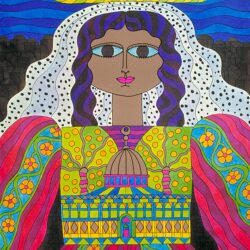How MoMu digitises 17th & 18th century copybooks and ledgers

The Dries Van Noten Study Center is part of MoMu. This initiative brings together the activities of MoMu’s study collection and the museum's research projects all in one place. At MoMu, we believe that museums play an important role as pockets of innovation within the cultural and scientific fabric. Digitisation is an important driver of innovation. We are therefore pleased to present the following project on the subject of handwritten text recognition as applied to one of the masterpieces in our collection.

The 'Melijn archive handwritten text recognition' project consists of a plan to digitise, transcribe and publish twenty volumes of letter copybooks and ledgers from the 17th and 18th centuries. This commercial correspondence of the Melijn family, a family of Antwerp textile merchants, is made up of consists of around 20,000 letters and contains a wealth of information to unlock. For example, the archive provides an insight into the different commodities and trade routes and / as well as the various merchant families from that period. In addition, the Melijn family's correspondence also contains a great deal of information about aspects such as historical events or even smuggling routes.
For MoMu, this project was the perfect opportunity to unlock this historical source. It is also an opportunity to investigate the role that modern technologies, such as Handwritten Text Recognition (HTR), the International Image Interoperability Framework (IIIF) and Omeka S can play for the purpose of unlocking an archive by converting it into digital format.

How does handwritten text recognition work? Using the application Transkribus (READ-COOP), we train a computer model that automatically reads the letters and transcribes them into computer-readable text. In this way, we can transcribe more than 10,000 pages of handwriting in a short space of time. However, the automatic transcriptions still need to be corrected or validated, and this is performed by a human eye. To carry out that task, we use the Transkribus Lite environment, in which we are organising a transcribathon (transcription marathon). This will enable us to build up a community that will help us to unlock the Melijn archive.

Digitally reunited
In 1994, ten volumes of the Melijn archive came into the museum's possession as a result / by means of a gift. Such an important historical source relating to the textile trade of Antwerp is certainly in the most suitable place in the MoMu archives. Further research into the archives of the Melijn family shows that the archive was subdivided as a result of inheritance. Besides the ten volumes in the MoMu archives, another ten volumes are preserved at the Heemkundige kring Jan Vleminck. Those additional manuscripts were also digitalised digitised as part of this project. That way, the Melijn archive will at least be reunited be reunited in digital form.
Online platform
The project got under way in June 2020 as part of the Flemish Government's catch-up initiative to ensure that museum collections are captured in digital format. We are expecting to launch the online platform, on which the digitalised and transcribed Melijn archives can be consulted, in autumn 2021. On this platform, you will be able to browse freely through the entire Melijn archive, and you will also be able to look up specific terms in the transcriptions.


